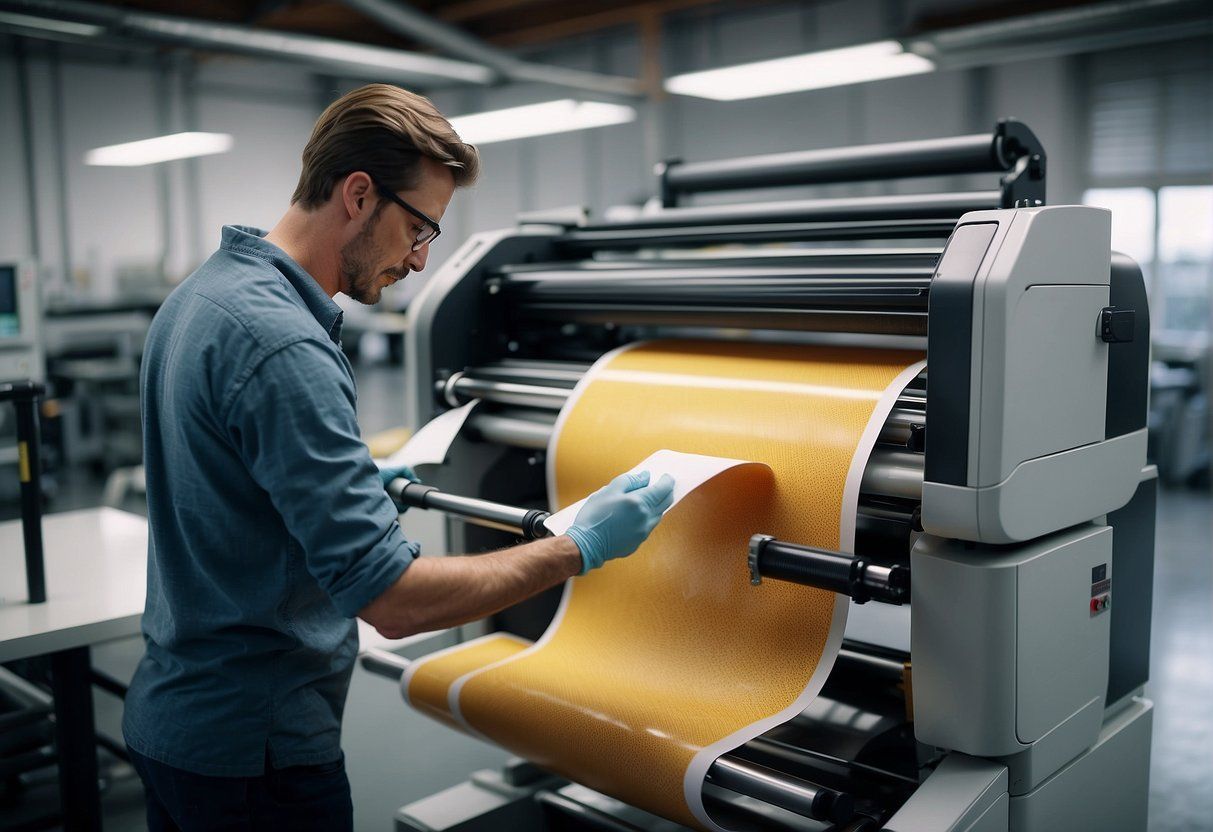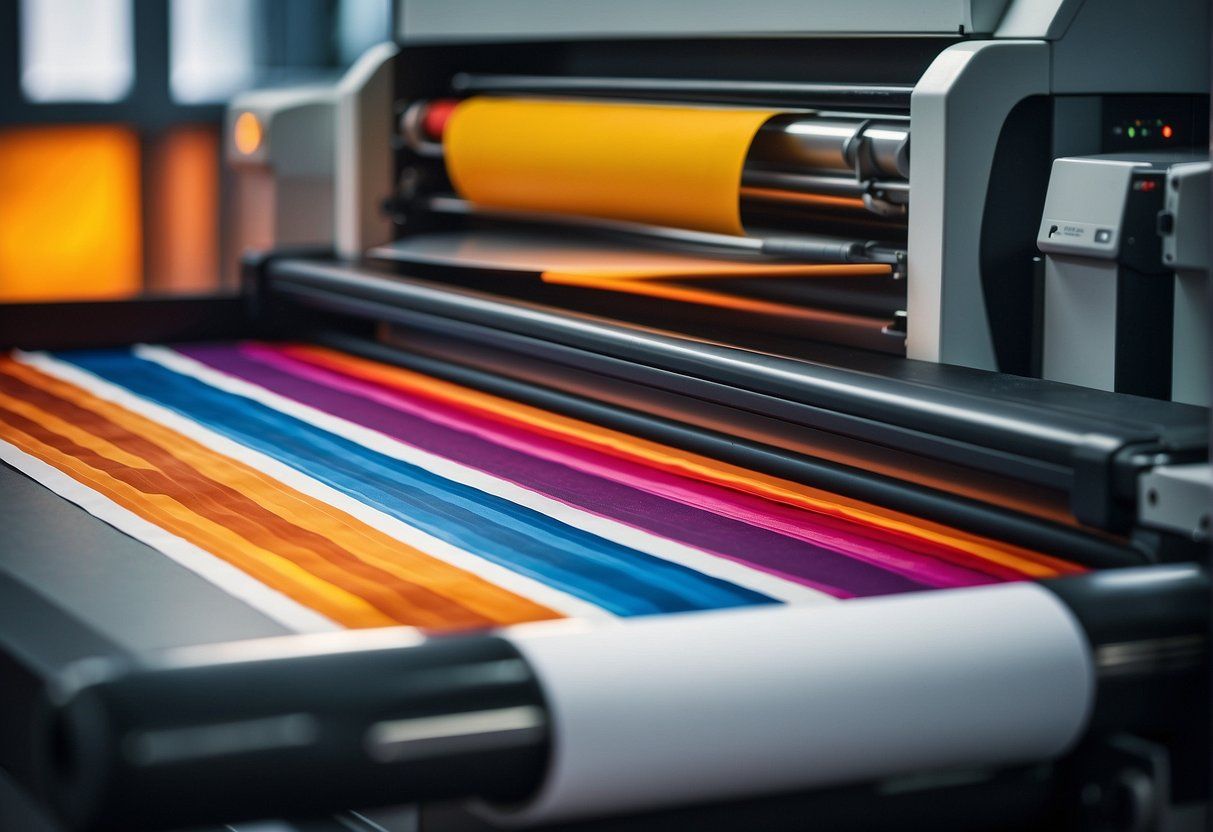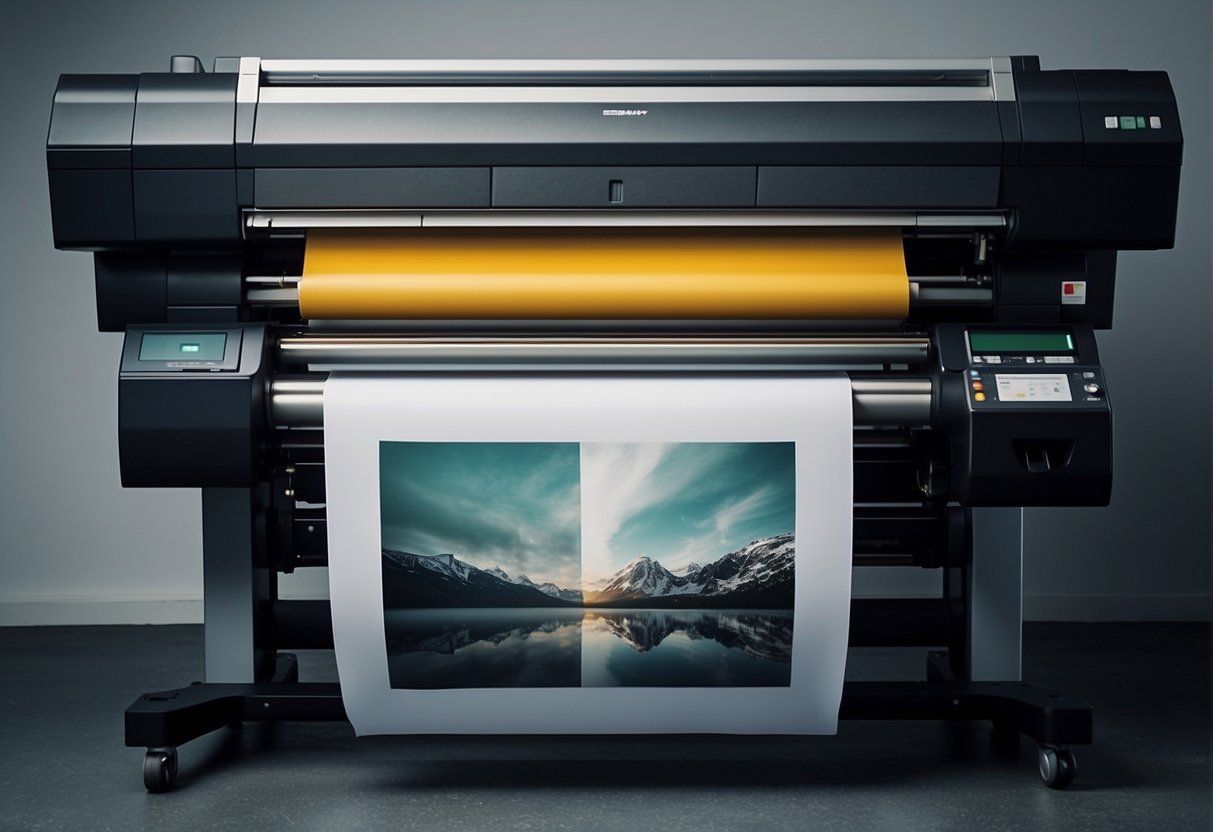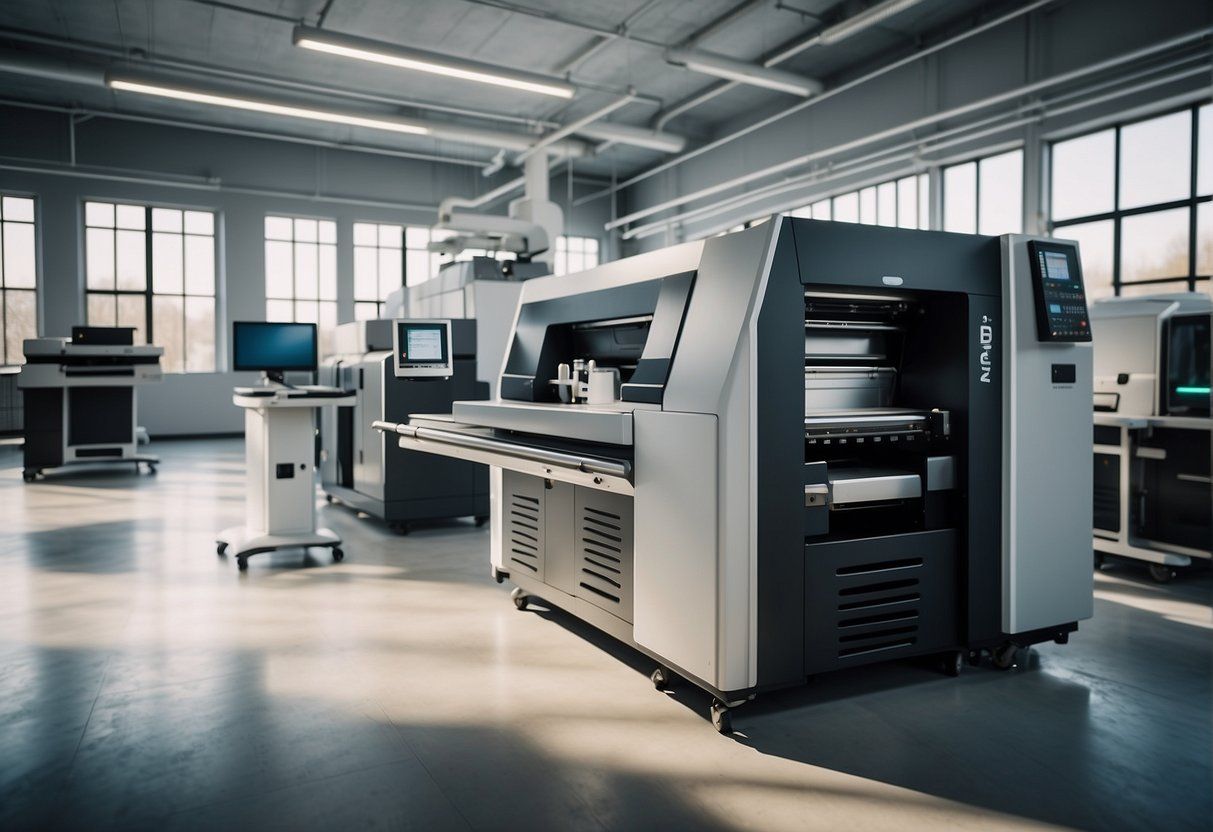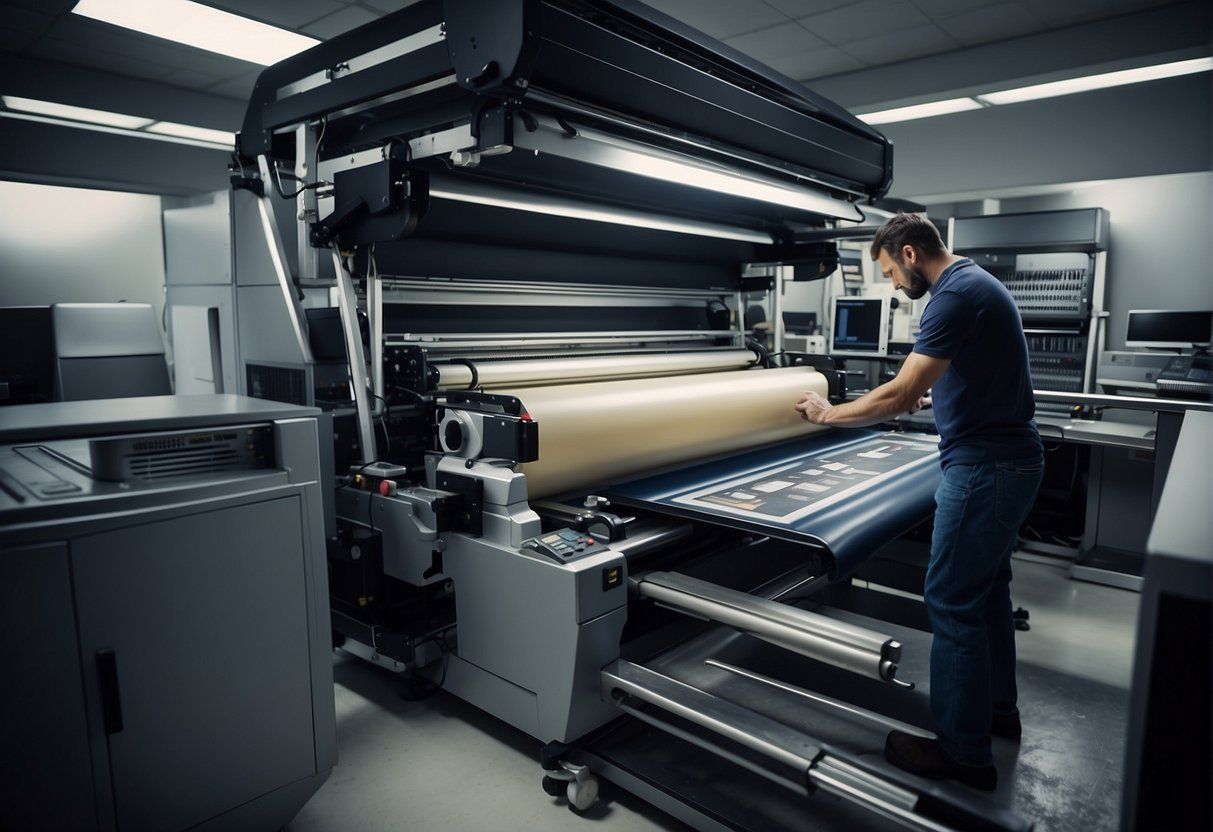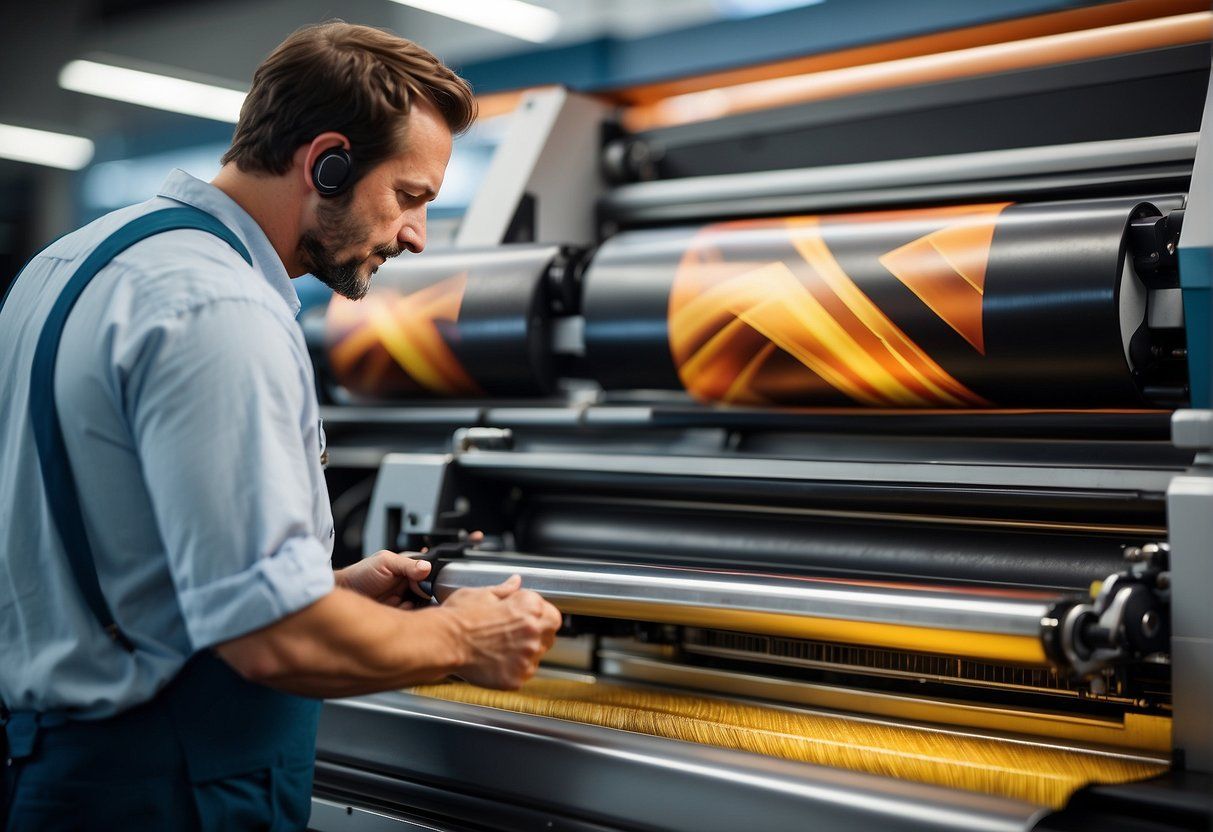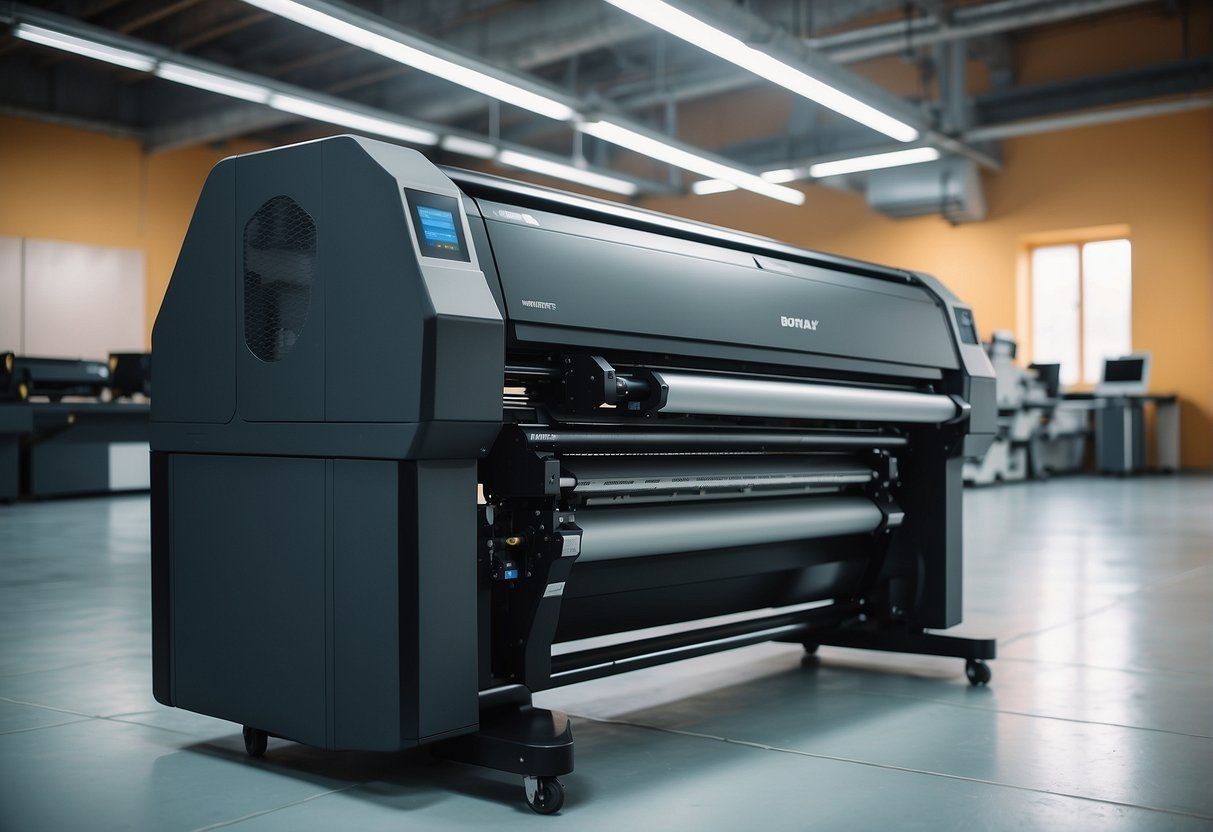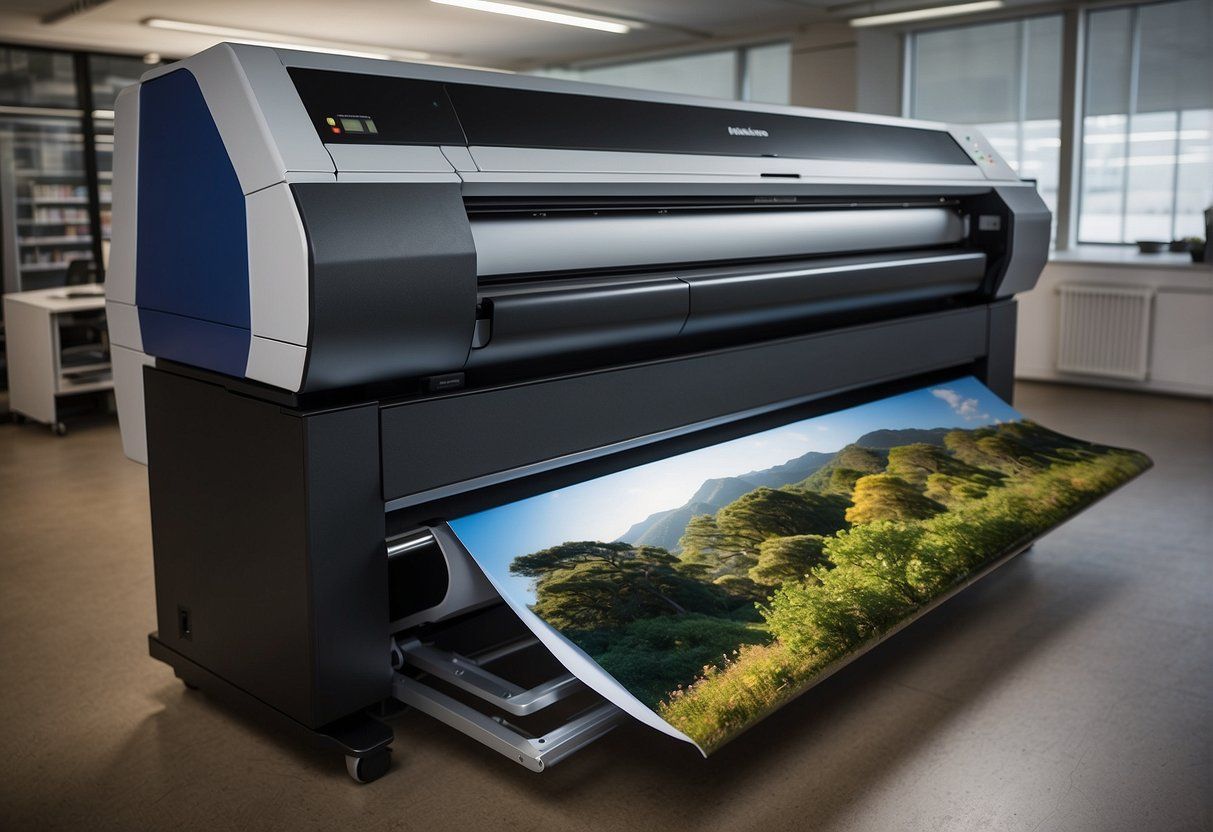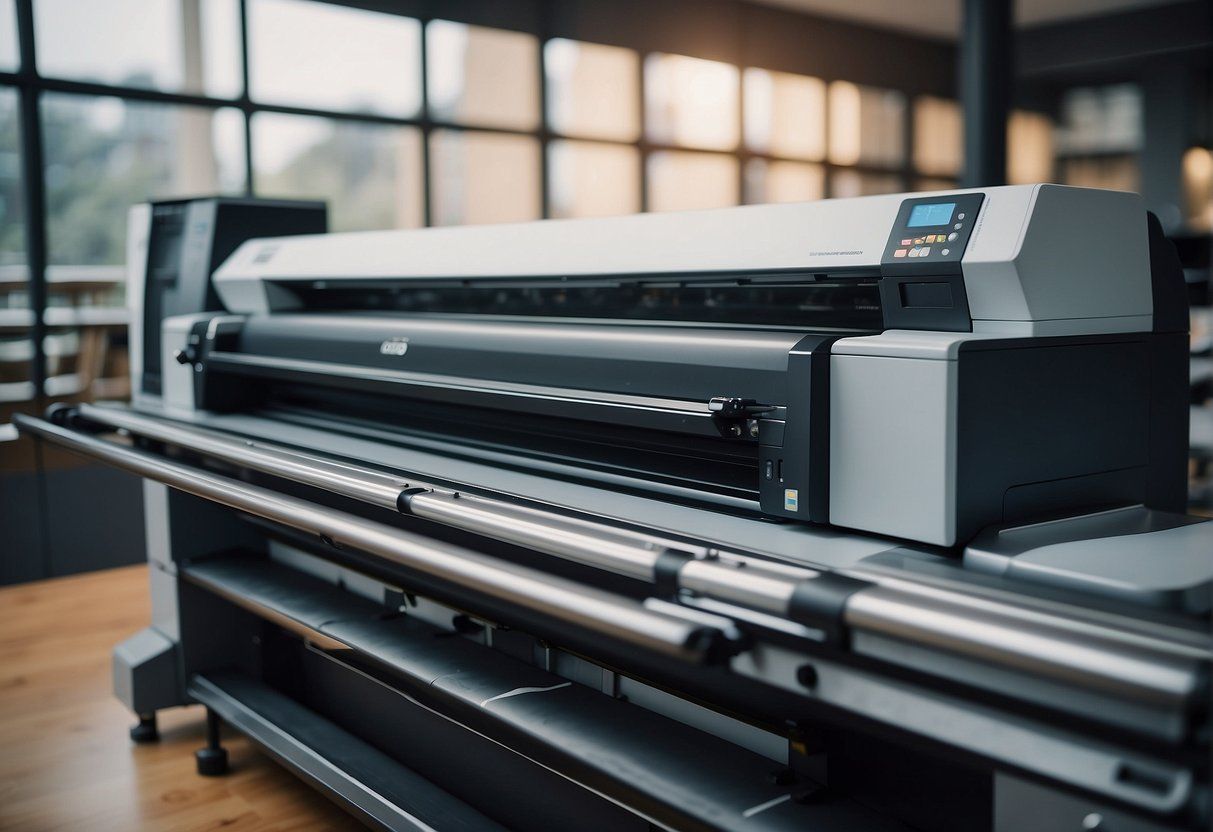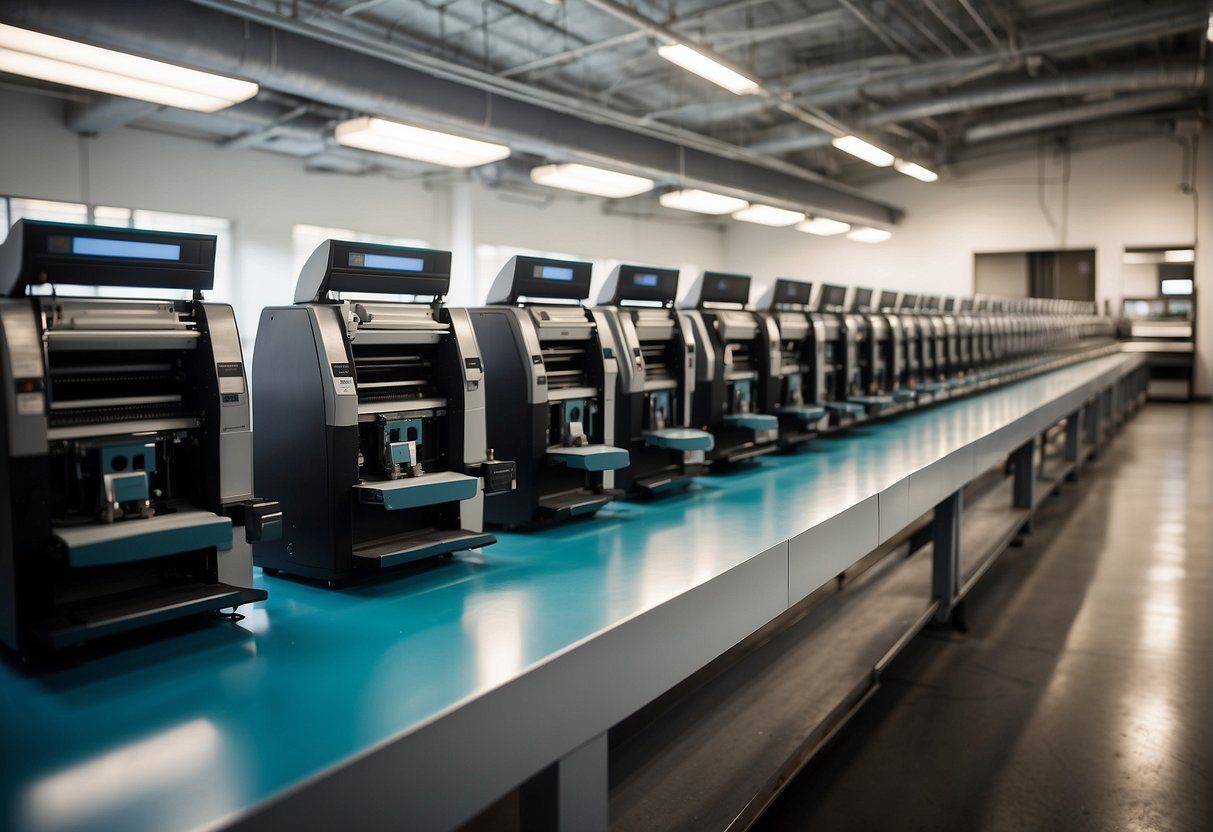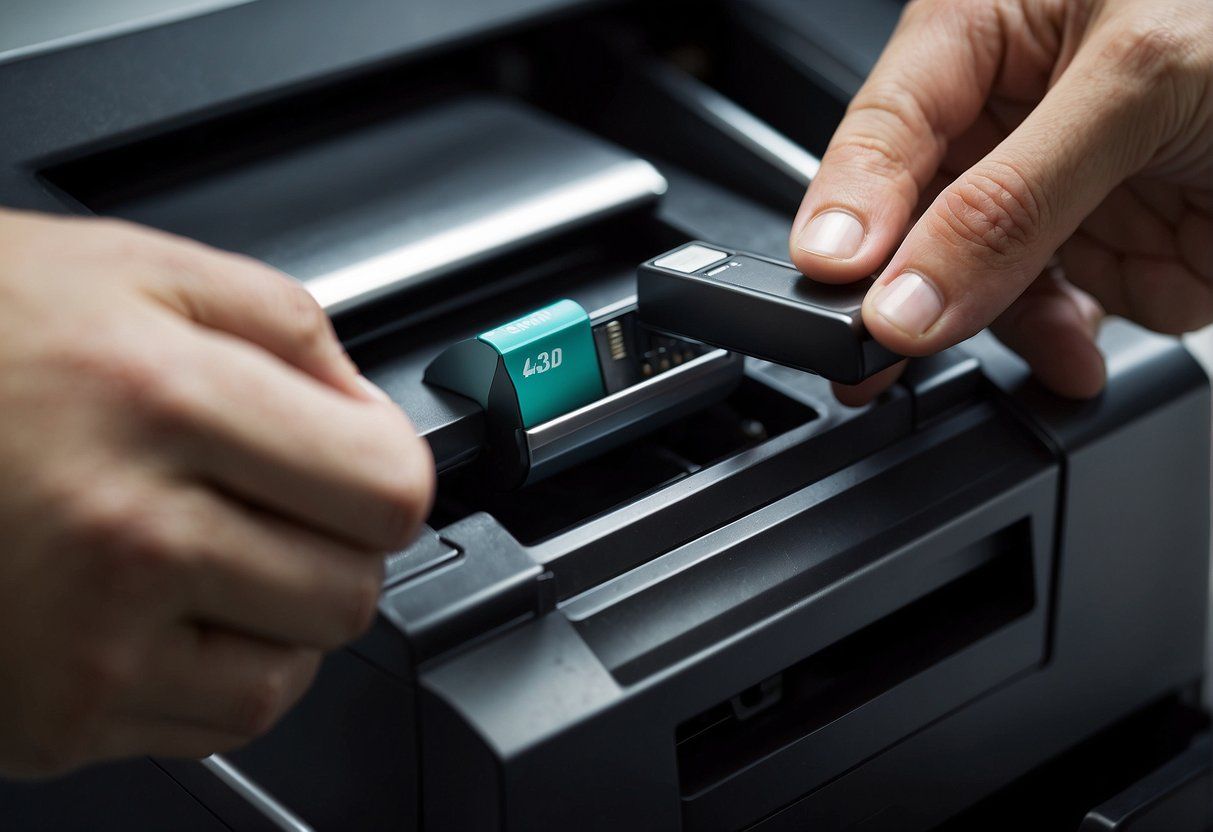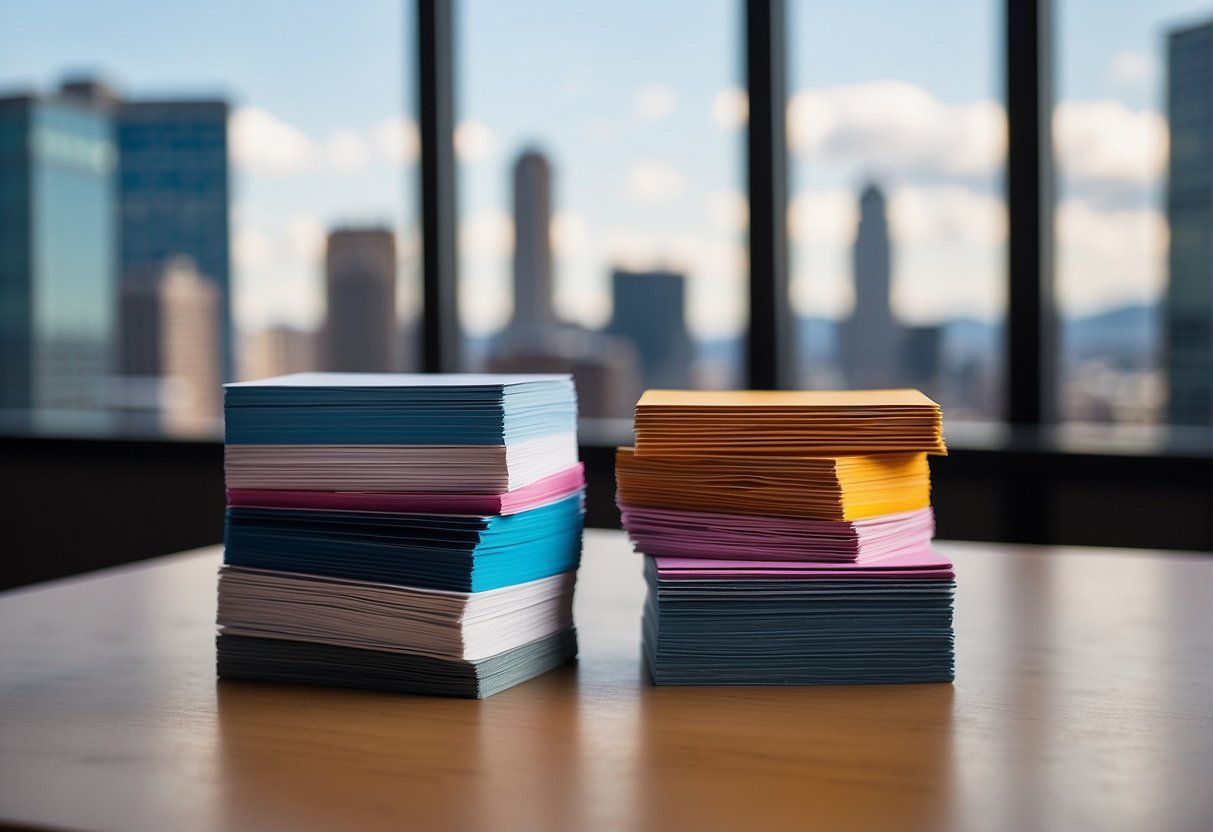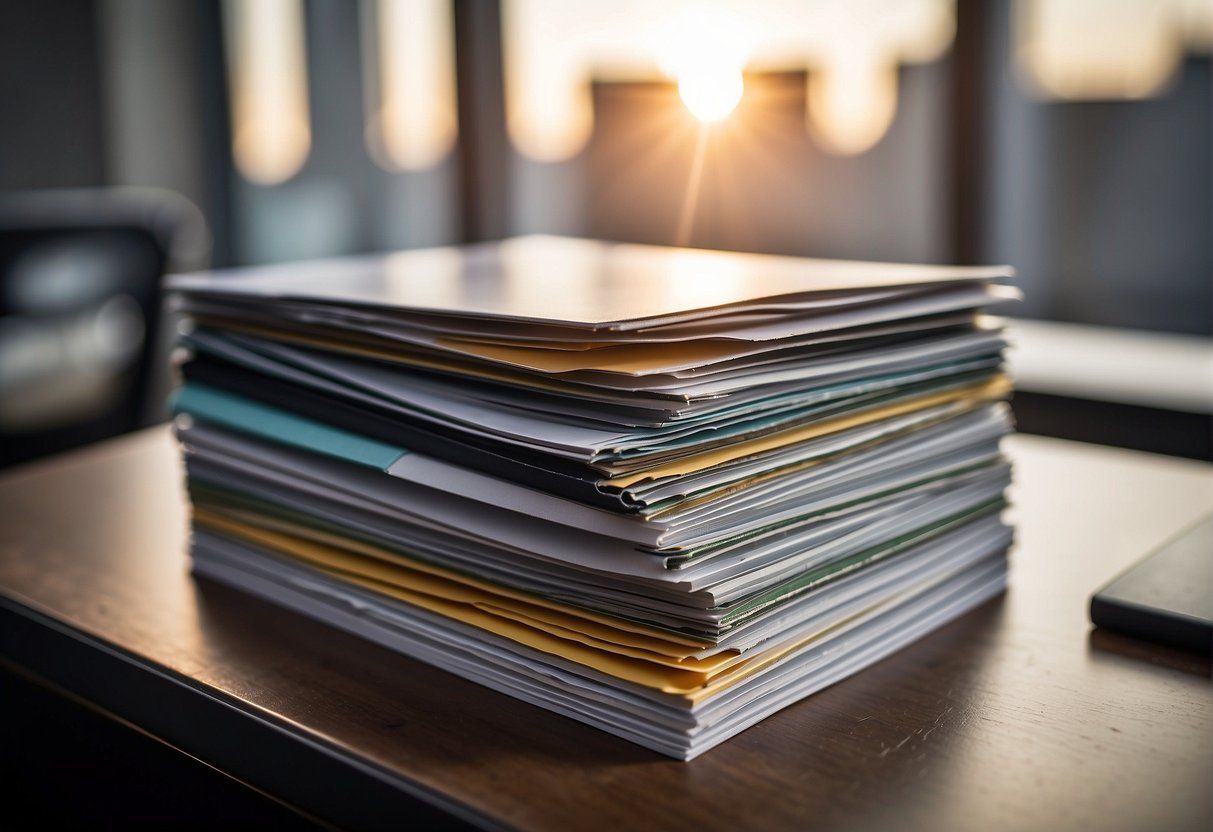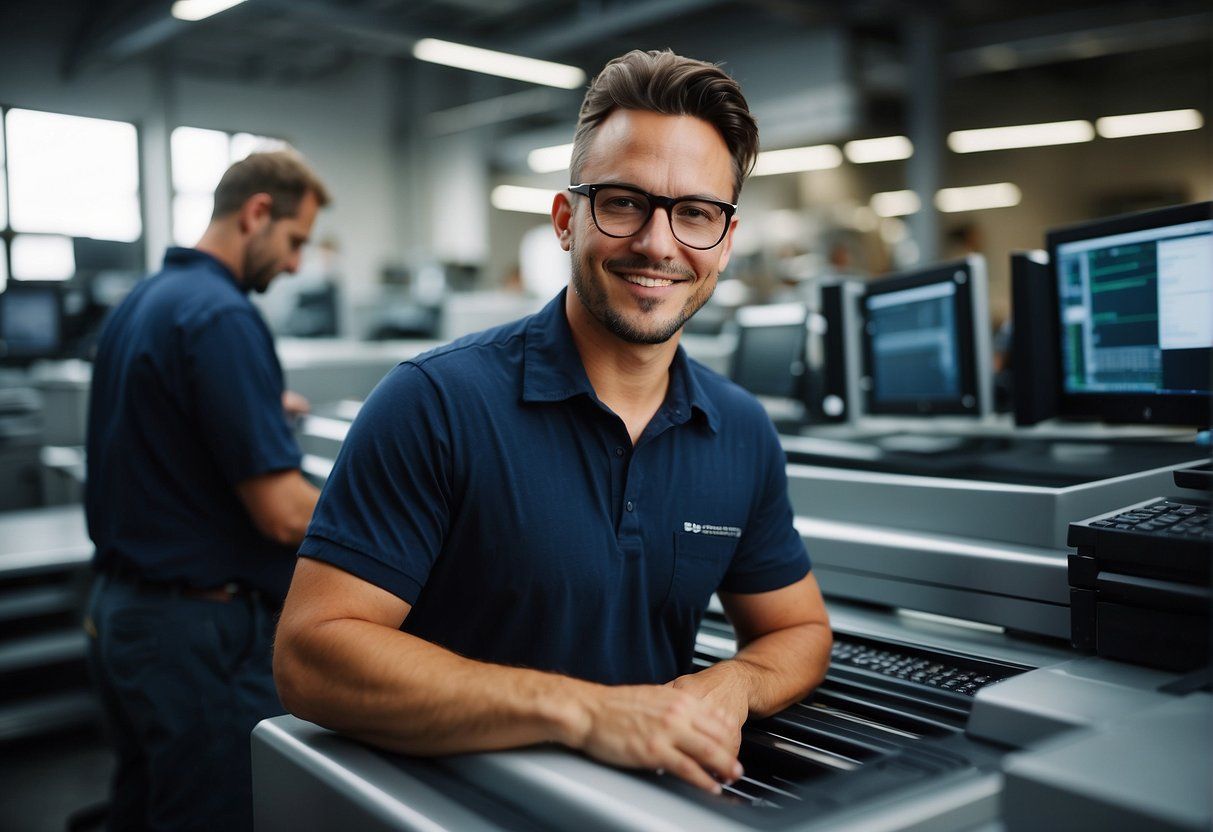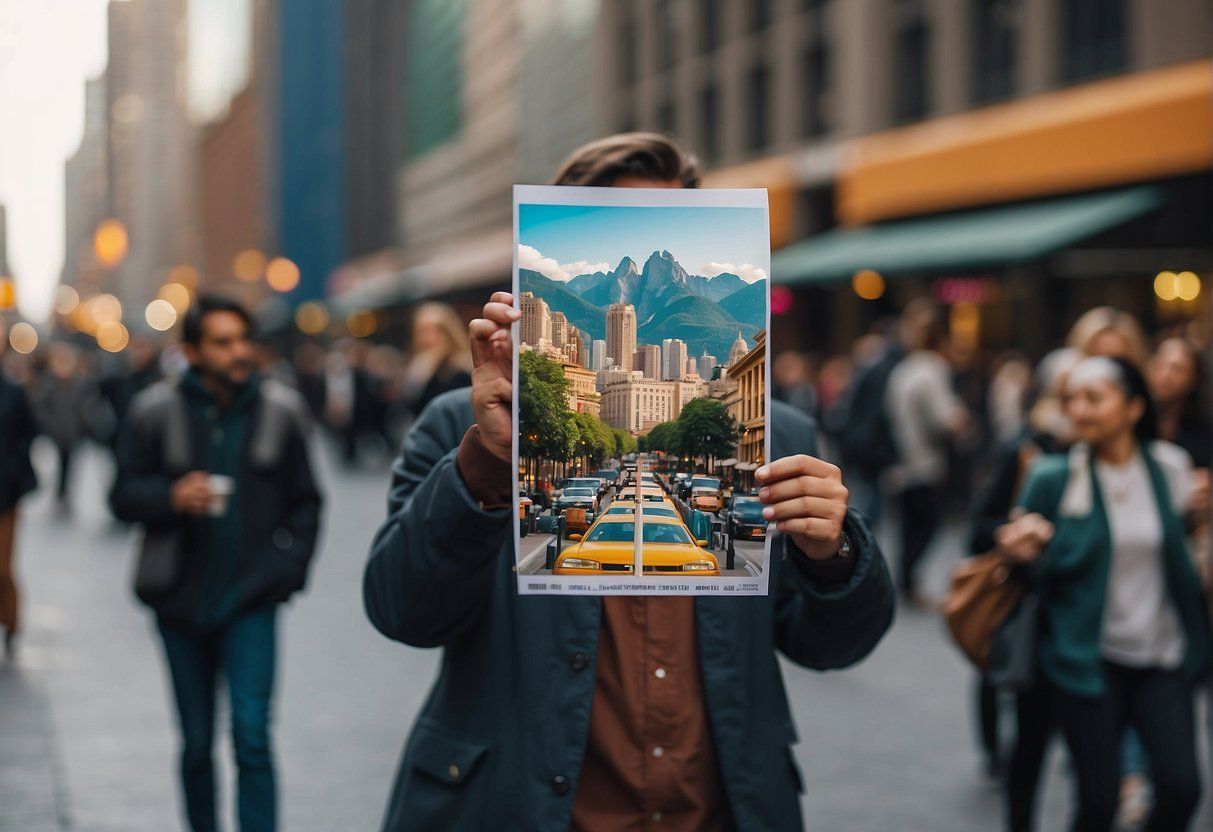Large format printing, a vital technology in various industries, has expanded the capabilities of printing by allowing the creation of much larger and more detailed prints than traditional printing methods. This technology encompasses a variety of printers and techniques designed to produce materials for advertising, construction, and artistic purposes. Big scale printing equipment is tailored to handle materials such as vinyl, canvas, glass, metal, and more, enabling the production of signage, banners, wallpapers, and architectural drawings.
Advancements in printing technologies have significantly improved the quality and efficiency of large format printing. Modern printers employ both inkjet and laser options, with cutting-edge techniques such as rapid liquid printing and pellet-based 3D printing being used for complex geometric shapes in construction and other fields. These improvements also bring about a need for skilled designers and operators, who must understand the intricacies of the pre-printing process and the specific requirements of various materials and substrates.
Key Takeaways
- Large format printing equipment facilitates the production of oversized prints for diverse applications.
- Technological innovations have enhanced the capabilities and quality of large format prints.
- Proper understanding and handling of different materials and cutting-edge techniques are essential in this domain.
Overview of Large Format Printing
In the realm of visual communication, large format printing has become a pivotal technique, offering versatility for everything from vibrant graphics to impactful advertising.
Evolution and Importance
Large format printing has significantly evolved, transitioning from traditional analogue methods to advanced digital techniques. This progress has expanded the scope and efficiency of producing large visual displays. It is crucial in marketing
and branding
strategies, as it creates high-visibility materials such as posters
, banners
, signs
, and displays
used in trade shows
.
Uses and Applications
The applications of large format printing are diverse and highly sought after in various sectors. In advertising
, it’s used for outdoor advertising
, vehicle wraps
, and wall murals
to make bold brand statements. Floor graphics
and window graphics
are also popular, providing direction and messaging in public spaces and retail environments. The high-quality print output guarantees the effectiveness of these materials in catching the eye and engaging the audience.
Types of Large Format Printers
Large format printers are essential tools in various industries, capable of producing oversized prints for graphics, banners, and other large-scale materials. There are several types of these printers, each with unique features suited for specific applications.
Inkjet Printers
Inkjet printers
utilize droplets of ink to render an image onto a variety of substrates. They are praised for their exceptional color accuracy and quality of print, making them ideal for detailed graphics and high-resolution images. One example of technological advancements in this category is the study on various control algorithms for large-format printers
, emphasizing fast and safe convergence in printing processes.
- Advantages
: High-quality images; excellent color reproduction
- Common Uses
: Fine art prints, photo enlargements, detailed graphics
UV Flatbed Printers
Equipped with UV light
curing technology, UV flatbed printers
can print directly onto a plethora of rigid and flexible materials. This versatility opens up numerous possibilities for applications beyond paper, including wood, glass, and metals. The UV bed method
, which selectively sprays a binder during the printing process, is another noteworthy approach within large format printing technologies.
- Advantages
: Ability to print on a wide range of materials; quick-drying UV inks
- Common Uses
: Signage, backlit displays, specialty items
Roll-to-Roll Printers
Roll-to-roll printers
, as the name suggests, print on flexible media that’s supplied on a roll. This design streamlines the printing process for large, continuous jobs like banners and wall graphics, enhancing efficiency and productivity. The nature of these printers allows for consistent printing on various flexible materials such as vinyl and fabric.
- Advantages
: Efficiency in printing long graphics; suitable for continuous media
- Common Uses
: Banners, wallpapers, vehicle wraps
Through different mechanics and technologies, these large format printers provide robust solutions for industrial and commercial printing needs, with precision that meets the demands of a broad spectrum of projects and markets.
Printing Materials and Substrates
Selecting the appropriate materials and substrates is crucial when it comes to large format printing. Different applications require specific characteristics such as durability, flexibility, and texture, which are provided by various printing materials.
Paper and Vinyl
When it comes to paper and vinyl
, they are the most widely used substrates for indoor banners, posters, and retail signage. Paper
is cost-effective for temporary displays, while vinyl
offers a more durable solution, being resistant to water and UV light degradation. Additionally, vinyl is used for floor graphics
due to its resilience and potential for slip-resistant finishes.
Fabrics and Textiles
Fabrics and textiles
represent a versatile group of substrates, stretching from lightweight flags to heavy-duty canvas
. Textiles are favored for their aesthetic appeal and are frequently utilized for trade show displays and interior decorations. Fabric graphics can provide a premium, textured appearance, and materials like canvas
can be effectively used for art reproductions.
Rigid Substrates
For signage, displays, and architectural graphics, rigid substrates
are indispensable. They include foam boards, aluminum composite, and corrugated plastic
, each offering unique benefits. Corrugated plastic
is particularly popular for its combination of lightweight characteristics and durability, making it an excellent choice for both indoor and outdoor applications.
Design and Pre-Printing Process
The initial stages of large format printing are critical, as they set the stage for the quality and effectiveness of the final print. Design intricacies and the precision of pre-printing procedures greatly influence the outcome.
Graphics and Image Quality
For designs destined for large format printing, the inherent quality of graphics is paramount. Designers must create or source high-resolution images
to ensure clarity when the design is scaled up. They ought to work with vector-based graphics when possible, as these allow resizing without loss of quality. It is essential that all elements within a design maintain a resolution
of at least 300 dots per inch (DPI) to achieve crisp and vibrant image quality
.
Color Modes and Resolution
Large format printers usually operate using the CMYK color mode, which is different from the RGB mode commonly used on computer screens. Consequently, designs
should be converted into CMYK to accurately predict how colors will appear when printed. Additionally, managing the resolution
across different design elements is crucial. Designers should harmonize high-resolution imagery and graphics to avoid discrepancies in print clarity. Use of a standardized color profile is also advised to maintain color consistency across various printing equipment and techniques.
Printing Techniques and Technologies
Recent advancements in large format printing equipment and techniques have catered to a plethora of industrial and commercial applications. Precision, efficiency, and versatility are at the forefront of these developments, allowing for high-quality production on a variety of substrates.
Inkjet Technology
Inkjet technology has revolutionized large format printing with its precision and versatility. It operates by propelling droplets of ink onto the substrate, allowing for high-resolution images with vivid colors. An important consideration in inkjet printing is the choice of ink
type, which varies from aqueous to solvent, UV-curable, and latex inks, each offering different qualities in terms of durability and substrate compatibility. A key benefit of inkjet technology
is its ability to print on a wide range of materials, including paper, vinyl, and fabric.
UV Printing
UV printing refers to a technique that employs ultraviolet light to cure or dry ink as it is printed. Unlike traditional printing methods, UV printing directly cures the ink, allowing for immediate handling and processing, which contributes to increased production speed and reduced drying time. UV inks
also boast enhanced durability, resisting fading and environmental damage, making them suitable for both indoor and outdoor applications. Additionally, UV printing is more environmentally friendly compared to solvent-based inks, as it produces fewer volatile organic compounds (VOCs).
Screen Printing
Screen printing remains a popular choice for large format applications due to its ability to produce vibrant colors and high-opacity images on a multitude of substrates. This method involves creating a stencil (the screen) and using it to apply layers of ink on the printing surface, one color at a time. Screen printing
is especially favored for its economic efficiency in large runs, durability, and the tactile quality it can lend to printed materials. It is a cornerstone technique for applications ranging from fine art reproduction to large-scale commercial banners and signage.
Post-Printing and Finishing
Once large format printing is complete, the post-printing phase ensures protection, enhanced appearance, and readiness for display. This phase involves precise trimming, thoughtful laminating, secure mounting, and aesthetic framing.
Trimming and Laminating
Post-printing typically commences with trimming
. It involves cutting the printed media to the final desired size with precision. This could mean removing excess borders or segmenting a larger image into smaller, individual pieces. The trimming process can either be manual, using straight blades and rulers, or automated via cutting machines for higher volumes and consistent accuracy.
Laminating
applies a clear protective layer over the print, guarding against UV rays, scratches, and other environmental factors. Options vary from glossy to matte finishes, each offering distinct visual effects and functional benefits. Laminating also adds rigidity to prints, making them more durable and easier to handle during subsequent mounting or framing.
Mounting and Framing
Mounting
gives the print stability and prepares it for display or framing. It involves adhering the print to a rigid substrate, such as foam board, using adhesives that could be pressure-sensitive or require heat activation. The choice of substrate can depend on the end-use requirements, ranging from lightweight materials for temporary displays to more durable ones for long-term use.
Framing
is the final touch that not only enhances the visual appeal but also provides a level of protection. Frames are chosen to complement the printed artwork and can vary from simple plastic borders to elaborate custom designs. Framing techniques vary but often include the use of a glazing or acrylic front to protect the print face and a backing board to seal the rear.
Durability and Quality Control
Weather-Resistant Materials
Weather-resistant materials are essential for outdoor applications of large format prints. Polymer materials
, for instance, are often used due to their resistance to moisture and UV light. A notable study on large-format additive manufacturing of polymers
analyzed different fabrication processes, highlighting the importance of selecting materials that can endure various weather conditions without degrading in quality.
- UV-Inhibited Inks
: Maintains color fidelity and print vibrancy under sunlight.
- Vinyl Substrates
: Offers durability against rain and wind.
- Coating and Laminates
: Provides an extra layer of environmental protection.
Consistency and Quality Assurance
Quality control processes are instrumental for ensuring that each print output meets the promised high-quality standards. Consistency in large format printing hinges on robust quality assurance methodologies
, which include regular calibration of printers and real-time monitoring. For instance, there are methodologies for quality control
processes in additive manufacturing products, adaptable to various measurement instruments and supervision methods, ensuring high-quality prints across different manufacturing settings.
- Pre-printing Calibration
: Machines need regular calibration to maintain accuracy.
- Real-Time Monitoring
: Detects anomalies during the printing process.
- Post-Printing Inspection
: Ensures the final product adheres to quality thresholds.
Marketing and Business Applications
In the competitive landscape of commerce and trade, large format printing is a bedrock tool for elevating marketing and advertising strategies. It serves as a tangible extension of a brand’s identity, ensuring brand visibility and recognition, especially in environments saturated with competing stimuli.
Brand Visibility and Recognition
Brands leverage large format printing technologies to create bold and visually compelling graphics
that are essential for effective outdoor advertising
. Through eye-catching signage and oversized posters, companies can convey their message and solidify brand recognition
in high-traffic areas, elevating their presence beyond the clutter of traditional advertising.
Trade Show Graphics
A critical aspect of a company’s marketing strategy is their presence at trade shows, where large format prints such as pop-up displays
and trade show graphics
play a pivotal role. These materials need to be both visually striking
and informative
, representing the brand with clarity to attract potential clients and partners amidst a sea of competition.
Retail and Office Space Branding
In retail and office spaces, the integration of large format prints helps in establishing a branded environment that communicates a company’s identity to every visitor. Tailored graphics
for walls, windows, and signage
create a cohesive look that can transform a physical location into an immersive brand experience.
Cost Considerations
In large-format printing, the balance between initial investment and long-term value defines cost considerations. Both cost-effectiveness and strategic pricing are crucial determinants of return on investment (ROI).
Cost-Effectiveness
Large-scale 3D printers, such as those used for additive manufacturing
, involve considerable upfront costs. However, they can lead to significant returns by reducing the expenses associated with traditional manufacturing methods. These printers facilitate the creation of prototypes and finished products with a wide range of thermoplastic materials, contributing to their cost-effectiveness
in a production setting.
- Material Efficiency
: 3D printing minimizes waste, using only the necessary amount of material.
- Reduced Labor Costs
: Automated processes lower hands-on time, decreasing labor costs.
- Energy Savings
: Some 3D printing techniques are designed to be energy-efficient, further impacting the total cost of operation.
Pricing Strategies
The pricing of large-format printing equipment is influenced by various factors including technology, features, and market competition. Effective pricing strategies
involve:
- Cost-Based Pricing
: Manufacturers calculate the cost of the printer, materials, and operation, then add a margin.
- Value-Based Pricing
: Prices are set based on the perceived value to the customer, which can result in higher ROI.
Adjustable Pricing Models
may be implemented based on the scale of operation and clientele, such as:
- One-time purchase
- Leasing options
- Pay-per-use agreements
By strategically setting prices, manufacturers can make large-format printing more accessible while ensuring a healthy ROI.
Industry Insights and Expert Advice
In the realm of large format printing, advancements in technology, understanding the competitors, and professional development are pivotal for success.
Emerging Trends
Current trends indicate a significant shift towards sustainable printing practices
and the integration of augmented reality (AR)
in print materials. Print shops are increasingly adopting specialized equipment that can handle eco-friendly inks and recycled materials, reflecting a growing environmental consciousness among consumers. Similarly, AR-enabled prints are providing interactive experiences, thus blurring the lines between digital and physical advertising.
Competitor Analysis
A rigorous analysis of competitors in the printing industry reveals a focus on customization
and speed
. Today’s print shops must invest in state-of-the-art machinery
to deliver personalized printing solutions rapidly to maintain a competitive edge. Fabricated: The new world of 3D printing
provides insights into how technological innovations are shaping the future of printing services.
Training for Printing Experts
To fully harness the potential of evolving technologies, comprehensive training programs
for printing experts are crucial. It is essential for staff at a print shop to be well-versed not only in operating specialized equipment but also in troubleshooting and maintenance. Certifications
in large format printing technology and software proficiency are now becoming industry-standard, allowing experts to deliver high-quality printing services efficiently.
Custom Solutions and Innovations
Advances in large format printing equipment and techniques have allowed for unparalleled customization and innovation, especially in sectors such as interior design and personalized applications. These sophisticated solutions provide endless creativity for designers and businesses alike.
Wallpaper and Interior Design
Interior designers employ large format printing to create custom wallpaper
that transforms spaces into unique environments. Whether for homes or commercial spaces, these custom wallpapers can feature anything from intricate patterns to oversized murals
. They offer a personalized touch that standard wallpaper selections cannot match, and innovations in printing technology ensure high-quality, durable results.
Custom Sizes and Unique Applications
The realm of customization
reaches beyond the conventional constraints with bespoke custom sizes
and unique applications
. Large format printers can accommodate a variety of substrates and dimensions, giving rise to tailor-made prints for applications as diverse as vehicle wraps, floor graphics, and even outdoor installations. This customization allows businesses to create impactful branding and personalized products that stand out.
Specialized Equipment and Techniques
The heart of this innovation lies in the specialized equipment
and advanced techniques
used in large format printing. Manufacturers are consistently innovating, offering printers that can handle a wide array of materials with precision and efficiency. These machines often couple with cutting-edge software for intricate designs and complex prints, enabling the production of high-grade graphics at impressive speeds and accuracy.
Environmental Considerations
In the realm of large format printing, considerable strides have been made to foster sustainability and introduce eco-friendly options. These efforts not only aim to mitigate the environmental impact but also to promote responsible use of resources across the industry.
Sustainable Materials and Practices
The quest for sustainability in large format printing leads to the adoption of alternative materials
that have a lower environmental footprint. Use of papers sourced from sustainable forests
, and biodegradable or recycled materials
, are central to this movement. Moreover, responsible manufacturers implement safeguards
within their equipment to minimize waste and facilitate efficient energy use.
To reduce the ecological impact, facilities are shifting to water-based inks, which release fewer volatile organic compounds (VOCs) compared to their solvent-based counterparts. Companies like CEWE
utilize UV-inkjet printing, which aligns with the eco-friendly mantra by producing less waste and eschewing harmful chemicals.
Eco-Friendly Printing Options
Incorporating eco-friendly printing options
has become a priority in large format printing. UV-curable inks
are prominently featured for their quick-drying properties that reduce energy consumption and lack of harmful solvents. This is critical as it presents a printing method that is not only efficient but also more environmentally friendly
.
Integration of 3D printing technologies offers customization without excess
, leading to fewer resources used and a decrease in waste produced. Innovations like 3D printed concrete
demonstrate how large-scale production can embrace both economic viability and environmental sustainability
, pushing the boundaries of what’s possible without straining planetary resources.
Client Perspectives and Case Studies
In exploring the impact of large format printing equipment and techniques, it is essential to consider real-world applications and feedback. Case studies illustrate the versatility and effectiveness, while client testimonials offer a genuine gauge of performance and satisfaction.
Success Stories
Company A: Transformative Impact on Marketing
A leading car manufacturer utilized large-format printing to create life-size billboards and showroom displays, resulting in a significant uptick in customer engagement and dealership traffic. These visual tools helped in communicating the brand’s message effectively, increasing overall sales by 18% within six months of the campaign launch.
Agency B: Efficiencies Realized in Productivity
A graphics design agency specializing in public transportation signage found that adopting new large-format printing technology increased their output rate by 40%. This translated to quicker project turnarounds and higher client retention rates due to their ability to meet tight deadlines with high-quality prints.
Client Testimonials
- “Our gallery’s adoption of large-format fine art printing has not only elevated the aesthetics of our exhibits but has been fundamental in attracting a broader audience.” – Gallery Curator, New York
- “The precision and durability of the large-format prints have dramatically transformed our outdoor advertising campaigns. The weather-resistant quality ensures our investments have a longer lifespan.” – Marketing Director, Outdoor Apparel Brand
Frequently Asked Questions
In large format printing, choosing the right equipment and techniques is crucial to ensure high-quality output. This section addresses some common queries to guide in the production of large-scale prints.
What types of printers are commonly utilized for large-scale print projects?
There are several types of printers used for large-scale print projects, including inkjet, solvent, and UV flatbed printers. These printers are capable of handling various materials and sizes, each suitable for specific applications.
Which printing techniques are preferred for high-quality large format outputs?
For high-quality outputs, giclée printing
is often preferred for its fine art quality reproductions. Additionally, dye-sublimation is chosen for vibrant prints on fabric and rigid materials.
What file resolution is recommended for producing clear and detailed large format prints?
A file resolution of at least 300 DPI (dots per inch) is commonly recommended. High-resolution files ensure that the final print maintains clarity and detail, even at large sizes.
How do you manage color accuracy in large format printing?
Managing color accuracy involves using color profiles and calibrating printers consistently. Color management
tools and software are essential to match colors between the source and the final printed material.
What are the common maintenance challenges associated with large format printers?
Maintenance challenges include printhead clogs, color shift, and mechanical wear and tear. Regular cleaning and servicing can mitigate these issues
and extend the lifespan of the equipment.
What materials can be used for large format printing applications?
Materials for large format printing vary widely, including paper, vinyl, fabric, acrylic, and more innovative materials
like salt, soil, and cement for additive manufacturing applications. The choice of material depends on the use case and the desired durability of the print.…

